Austria is a beautiful country with so much to offer the tourist. During a road trip from southern Germany to the Czech Republic, we drove through a portion of Austria and made the following stops, knowing we could not do the entire country justice. The locations below are in order of our visit, from west to east.
Ehrenberg Castle. This is not a famous castle and while the castle is largely ruined, the hike up to it is very enjoyable. It sits on a steep hill in a beautiful valley (the featured image above is another view from the castle). The castle was built in the 13th century.

The steep approach to Ehrenberg Castle.
It is located near the town of Reutte, just 18 km (or 11 miles) across the border from the famous Neuschwanstein Castle in Füssen, Germany. There are three other castles near Ehrenberg, all of which were constructed to protect an important salt trade route in medieval times. The castles are in the process of becoming connected as a unified castle museum.
Salzburg. Salzburg is famous as the setting for the events in the musical and movie “The Sound of Music”, and for being the birthplace of Mozart.
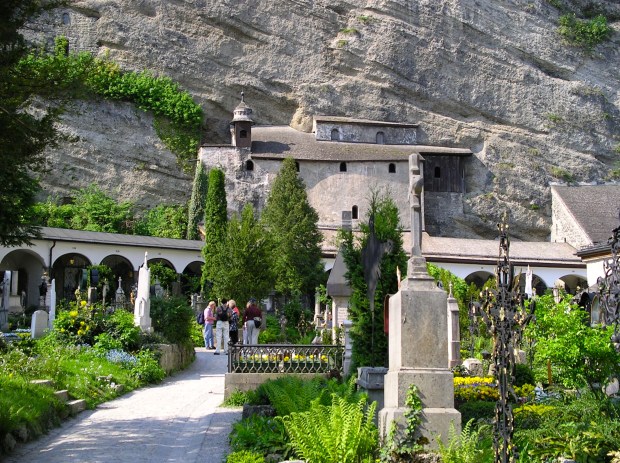
St. Peter’s Cemetery, which inspired the graveyard hiding scene in the “Sound of Music”.
The town was an independent state until the time of Napoleon. The old town is nestled around its whitewashed castle (Hohensalzburg Fortress), from which good views of the town and surrounding area can be seen.
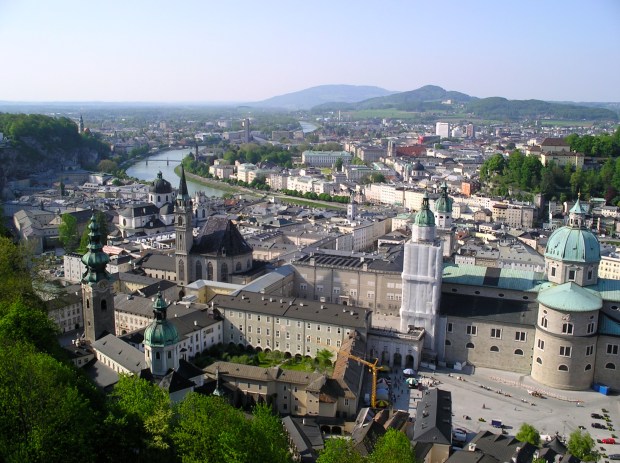
A view of Salzburg looking northwest from Hohensalzburg Fortress. The Salzach River meanders through the town.
Hohensalzburg is one of the largest medieval castles in Europe and was so impressive that no one attacked the town for a span of 1,000 years. We enjoyed a wonderful concert at this castle. (Interestingly, if you google “Salzburg Castle” you’ll be directed to a castle in Germany, not the castle in Salzburg!)
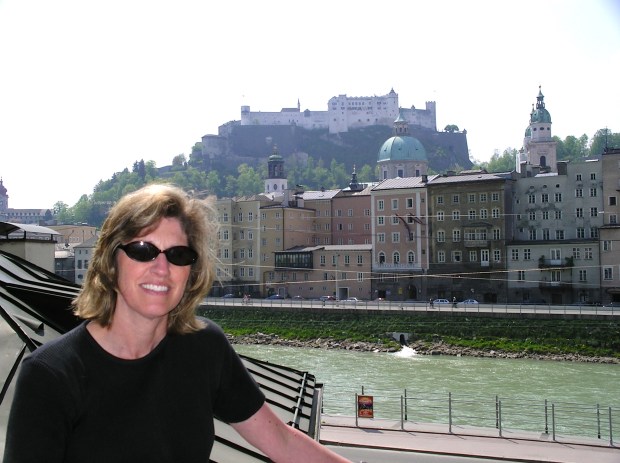
A view of Hohensalzburg Fortress and old town.
The old town was not too heavily damaged in World War II, even though Hitler’s “Eagle’s Nest” hideout (Berchtesgaden) is just south of Salzburg. As mentioned above, Salzburg is also the birthplace of Mozart, one of the most famous classical composers of all time. His birthplace is a museum in the old town.

Mozart’s birthplace in 1756 (Geburtshaus).
Mauthausen Concentration Camp. This Nazi slave-labor and death camp operated from 1938 to 1945. It is located 148 km (92 miles) east of Salzburg, on the Danube river. The prisoners worked in the nearby quarry and more than half its 206,000 prisoner/laborers perished from exhaustion or starvation.
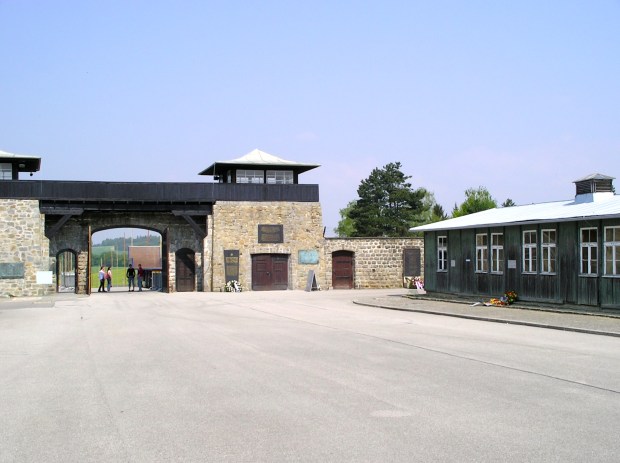
The entrance to Mauthausen (from the inside looking out).
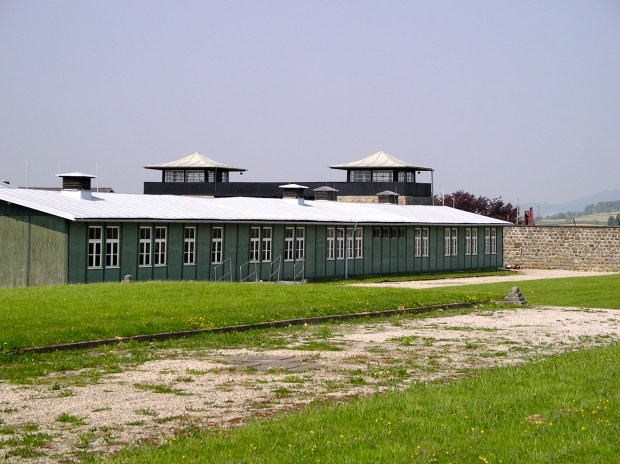
The prisoner barracks, camp wall and guard towers.
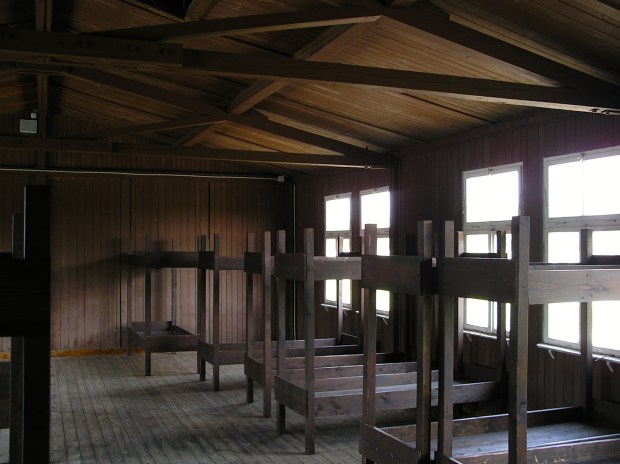
Prisoner barracks – interior.

Cremation oven (the gas chamber was next door).
A relatively small camp, Mauthausen still packs an emotional punch to the gut, thinking about the horrors that transpired here. There are quite a few exhibits and displays explaining “life” in the camp.
Melk Abbey. An amazing contrast to Mauthausen, this is a beautiful 18th century baroque abbey located in Melk, on the Danube river, about 87 km (54 miles) from Vienna. If you like Baroque architecture, this is the place to go.

The interior of the Church at Melk Abbey.
There was an 11th century Benedictine abbey originally on this site, but it burned down. The library and church are the two most stunning features of Melk Abbey.
Vienna. Vienna is one of Europe’s great cities. Although it’s a large city, the old part is quite compact and is famous for its music and beautiful architecture.
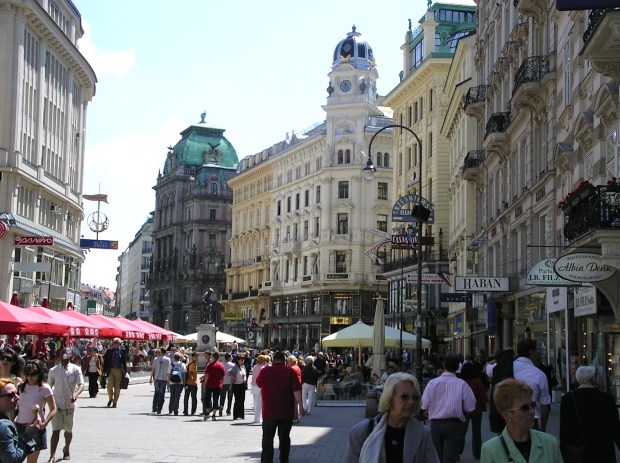
Street scene in Vienna.
We visited St. Stephan’s Cathedral, the Opera House, and the Hofburg Palace.
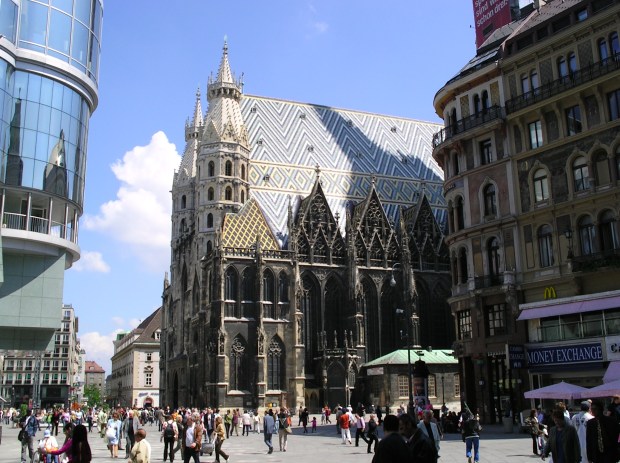
A view of St. Stephan’s Cathedral, built in the mid 13th century. The roof was damaged by fire in World War II. The tiles are decorative and local citizens contributed to the rebuilding of the roof in 1952 by buying a tile.
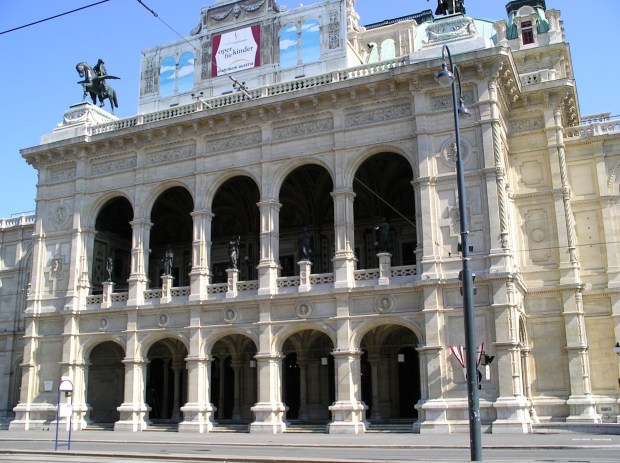
The famous Vienna Opera House, rebuilt after World War II. We took a tour, and our tour guide reminded me of Count Dracula! This is the home of the Vienna State Opera and Philharmonic Orchestra, where they do 300 performances a year.

A small view of the Hofburg Palace with various members of my family. The Palace is huge, and was continuously undergoing construction from the 13th century to the 20th century. It was the Imperial Palace of the Hapsburg Empire until 1918, and is still the home of the Vienna Boys’ Choir.
Outside of Vienna is the Schönbrunn Palace, which is nearly on scale with incredible Palace of Versailles near Paris. On another trip this would be a must-do.
